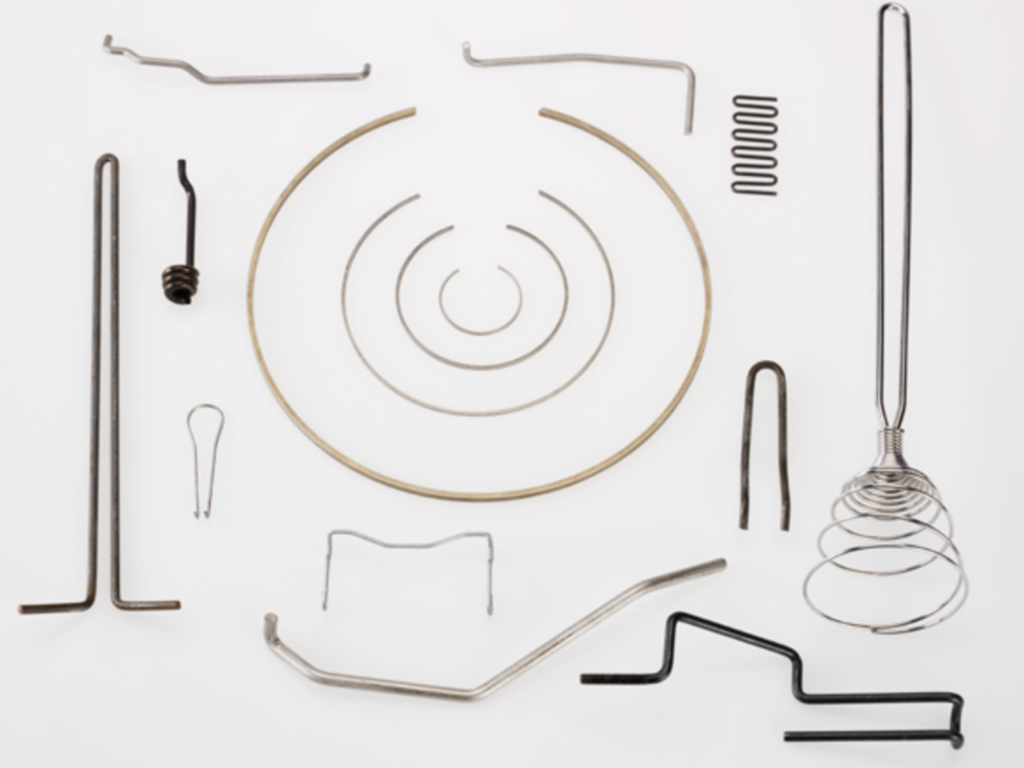How Wire Forms Are Made
Wire forms are crafted through various processes such as bending, extrusion, upsetting, and twisting. Each process plays a key role in transforming straight wire into precise shapes tailored for specific applications. At Jackson Spring & Manufacturing Co. Inc., we use a combination of these techniques to meet the unique needs of our customers.
Key Wire Forming Processes:
- Bending: This is the most common method, where an angle is introduced to a straightened wire to create intricate three-dimensional shapes. Bending allows for a wide range of configurations to be formed.
- Extrusion: In this process, pressure is applied to the wire as it is passed through an opening smaller than its own diameter, allowing for accurate shaping and strengthening.
- Upsetting: The wire is compressed in the axial direction to widen and shape it. This technique is particularly useful in producing thicker sections at specific points along the wire.
- Twisting: Wires are twisted to create combined lengths or specific shapes. This process is useful in creating forms that leverage the spring-back force of the material.
- Stamping: The wire is fed through a stamping press where it is shaped using dies. This method allows for precise molding of the wire into the desired part.
In addition to these core processes, other techniques such as welding, chamfering, and weaving are often utilized to achieve more complex designs.
Wire Forming Techniques
Wire forming machines, both manual and automatic, have evolved significantly. Automation, in particular, has revolutionized the industry by increasing production efficiency and enabling the creation of more complex wire forms.
- Manual Wire Forming: Done entirely by hand using levers and spindles, this technique allows for complete control over small-scale wire forming projects.
- Coil Wire Forming: This method involves wrapping wire around a metal blank to create springs or similar shapes.
- Roll Wire Forming: Ideal for producing wire parts in flat or round shapes, roll forming is a highly efficient method for creating consistent, high-quality wire forms.
- Pneumatic Wire Forming: In this automated method, wire is fed into a straightening machine and shaped pneumatically before being cut to the desired length.
These techniques allow for the production of complex wire forms with high precision.
Examples of Wire Forms
Wire forms are used in a wide range of applications, from simple hooks to intricate spring mechanisms. Here are some common examples:
- J Hook: With notched designs for easy hanging, J hooks offer durability and strong load-bearing capacity.
- S Hook: The distinctive S shape makes this hook ideal for hanging and organizing cables and cords.
- Linchpins: These components secure axles in place, ensuring the stability of wheels in many applications.
Other wire forms include utility hooks, powder coating hooks, D-rings, and wire guards.
Applications of Wire Forms
Wire forms are used in a multitude of industries, each with specific needs:
- Construction: Brackets and clips for structural and hardware uses.
- Medical: IV hooks, coat hangers, and other healthcare-related components.
- Industrial: Handles and custom fixtures for machinery and tools.
- Agriculture: Equipment such as dairy implements and support brackets.
- Display: Ornamental designs used in product displays.
No matter the industry, custom wire forms can be tailored to meet specific requirements.
Materials Used in Wire Forming
Wire forms can be made from a variety of metals, each offering unique properties suited to different applications. Common materials include:
- Stainless Steel: Known for its durability and corrosion resistance.
- Galvanized Wire: Coated to prevent rust, ideal for outdoor applications.Brass: Offers excellent conductivity and corrosion resistance.
- Copper: Used for its electrical and thermal properties.
- Aluminum: Lightweight and corrosion-resistant, ideal for applications where weight reduction is important.
By selecting the right material, wire forms can be optimized for strength, flexibility, and durability, ensuring they perform as needed in their intended application.
Whether your project requires simple wire forms or highly intricate designs, Jackson Spring & Mfg. Co. Inc. offers the expertise to deliver precise, high-quality results tailored to your needs.

